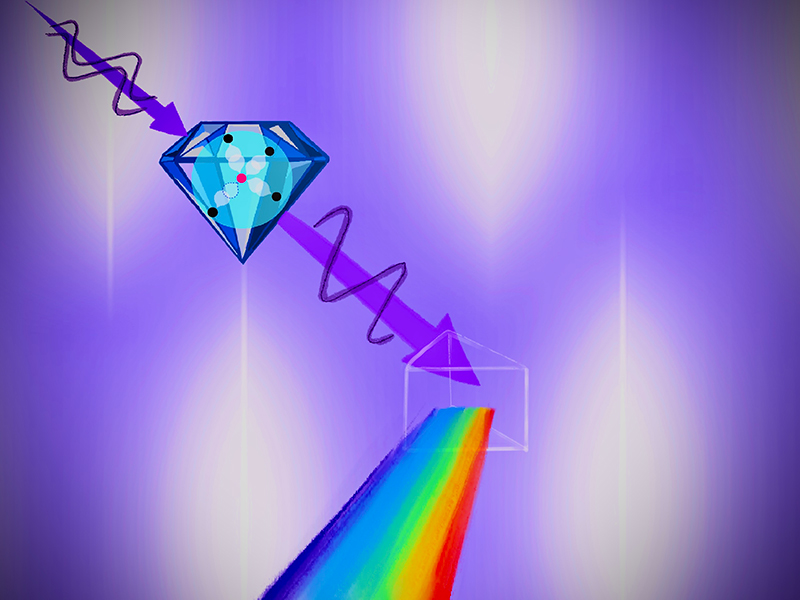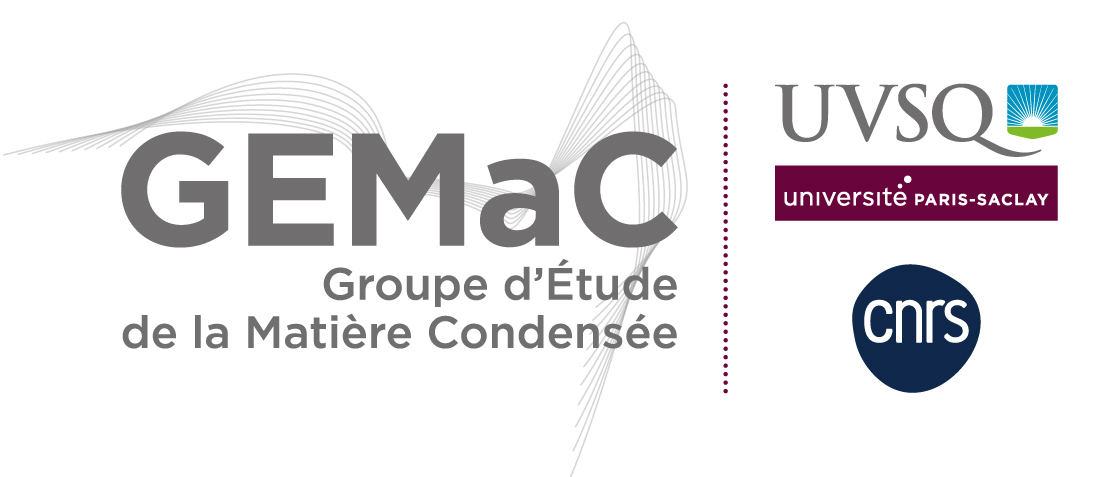You are here : GEMACENHighlights
- Partager cette page :
- PDF version
Blue diamonds to understand spin-orbit interaction
Very high resolution optical absorption measurements have made it possible to understand the light spectrum of boron-doped synthetic diamond, as part of an international collaboration between GEMaC and Kyoto University (Japan).
High-purity synthetic diamond has a wide range of industrial applications, particularly in the field of semiconductor electronics. The introduction of impurities gives them electrical conductivity, which is crucial for components. Boron atoms give diamond its characteristic blue colour.
The way in which the exciton, an elementary excitation of the crystal, interacts with these impurities has been the subject of controversy for more than twenty years. The luminescence lines of these blue diamonds could not be explained by the standard model used in semiconductor physics.
An international collaboration between GEMaC and the solid state spectroscopy group at Kyoto University, as part of a CNRS PICS project, has helped to solve this enigma. High-resolution absorption experiments were used to discover the origin of these spectral lines. A new model of the spin-orbit interaction in excitonic complexes localised on impurities was proposed as a more general framework.
"We exceeded the energy resolution limit of conventional luminescence measurements by directly observing the fine structure of bound excitons in boron-doped blue diamond using optical absorption," explains Nobuko Naka, team leader at Kyoto University's Graduate School of Science.
"We hypothesised that, in an exciton, two positively charged holes are more strongly linked than an electron-hole pair," adds Shinya Takahashi, first author of the study. "This exciton structure linked to the acceptor yielded two triplets separated by a spin-orbit splitting of 14.3 meV, supporting the hypothesis."
The luminescence resulting from thermal excitation can be used to observe high-energy states, but the current method of measurement broadens the spectral lines and blurs the finest separations. The scientists therefore cooled the diamond crystal to temperatures close to absolute zero. This made it possible to obtain nine peaks in the deep ultraviolet absorption spectrum, compared with the usual four with luminescence. In addition, the researchers developed an analytical model including the spin-orbit effect to predict the energy of the lines and their absorption intensity.
"In future studies, we are considering the possibility of measuring absorption under external fields, which would lead to additional line splitting and validation due to symmetry changes," explains Julien Barjon from GEMaC.
"Our results provide useful insights into spin-orbit interactions in systems beyond solid-state materials, such as atomic and nuclear physics. A deeper understanding of materials may improve the performance of diamond devices, such as light-emitting diodes, quantum emitters and radiation detectors," notes Naka.

Credit: KyotoU/Nobuko Naka
Référence
S. Takahashi, Y. Kubo, K. Konishi, R. Issaoui, J. Barjon, N. Naka
"Spin-Orbit Effects on Exciton Complexes in Diamond"
Physical Review Letters 132 (2024) 096902
Related link
https://www.kyoto-u.ac.jp/en/research-news/2024-02-28
Contact: Julien Barjon





